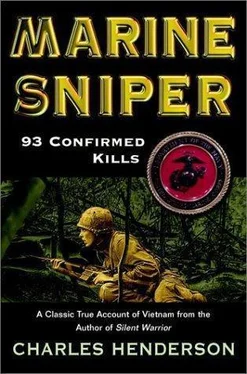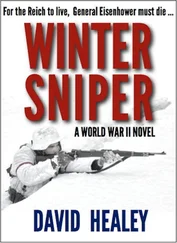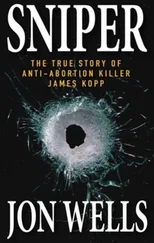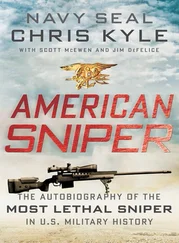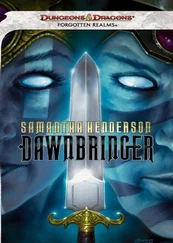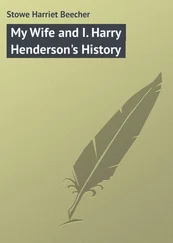It was late in 1978, a pleasant afternoon out on the rifle range and Major Willis stood talking to Hathcock who was watching his sniper students shoot moving targets on Death Valley. Willis shelled peanuts and shared them with Hathcock.
Neither Marine felt the need for a jacket. Hathcock had the splotchy green sleeves of his camouflage shirt rolled down. His camouflage bush hat showed signs of fading, but still looked crisp, especially accented by his white feather.
Willis leaned against the fender of a pickup truck that was parked on the left side of the range. Hathcock stood near the front and watched the snipers shoot. The major did not see what set Hathcock off, but Hathcock began screaming at the snipers, “Don’t you know better than that? You’re about to graduate and you still make stupid mistakes like that? You dummies are gonna die if you ever get into combat!”
Hathcock slammed his fist on the hood of the pickup and continued to scream and swear at his men. It was the behavior not of an instructor but of a man falling apart. At that moment, Major Willis, Hathcock’s commanding officer and his trusted friend, realized that the candle had burned short.
A few days later Willis spoke to Hathcock as a friend. The senior sniper had just finished a medical board and the news was worse. They contemplated retiring him and that worried Hathcock. He had to make twenty years.
“Hathcock, damn it, as far as I’m concerned, I’ll bury your body on the six hundred-yard line. You can stay here with me as long as the good Lord allows us to stay on this earth, but in this command, you’re gonna have to function.”
“Sir,” Hathcock said, leaning forward in the chair next to Willis’s desk, beneath a statue of John Wayne and a giant, silver trophy cup filled with peanuts, “I gotta make twenty. That’s only a few more months. Just until the end of June.”
It was just before Christmas and Willis had strong doubts whether Hathcock could make those final few months, but he would not spoil a man’s Christmas with a decision right now. However, he did plant a seed for Hathcock to consider.
“There are other things involved here,” WilUs told him. “You’ve had a long and illustrious career. You are a living legend. People respect you. All the snipers want to be Catios Hathcock. They emulate your gesticulations, your voice, the way you go about things. Not only do they do what you say, but they want to be you. So you’ve got to watch what you do, because you can destroy what you’ve done here. And the destruction is not just that of a myth or a legend, but jather the sniper won’t be as good as he should have been because he can’t be you. You want to turn him into a top-notch sniper, but you want to do it within the Marine Corps order and within the means that we have available, not through total frustration and anger.”
One day in January 1979, while he watched his snipers taking their final examination—trying to move across open terrain, camouflaged from sight, make it to their firing point, fire, and exit without either Hathcock or Captain Cuddy seeing them—Hathcock collapsed.
Doctor Brannon examined him, watched him for days, and read the tests. The inevitable conclusion occurred: It was time to quit.
He called Major Willis. When the major answered, Brannon began the conversation by simply saying, “No.”
Willis knew immediately what the call was about.
“Look,” Willis said, “I’ll come up there and sit down and talk to you about it.”
“No!”
“I know him. I’ve known him a long time.”
“No,” the doctor said. “I know him too, and I’ve counselled him and the answer is no. He has to get out.”
It was hard for Willis as a commanding officer, and doubly hard as a friend, to hear that final verdict. And if he couldn’t accept that no, then how could Hathcock?
On April 20, 1979, in Maj. David Willis’s office, Gunnery Sgt. Carlos N. Hathcock II ended his Marine Corps career, transferred to the Disabled Retired List with 100 percent disability.
Hathcock had taught classes up to the day before his retirement. He told the snipers that afternoon, “Remember, the most deadly thing on the battlefield is one well-aimed shot.” He turned, fighting back tears, walked out of the room, put on his bush hat with the white feather in its band, and went outside to be alone with his thoughts.
On that April afternoon when he stood before Major Willis and listened to the order transferring him to that retired list, he cried. Hathcock stood at attention and accepted a rifle from McAbee—a rifle built by the Marines from the Marksmanship Training Unit’s armory. Carlos Hathcock had been involved in determining the requirements for this rifle and in testing it once it was made. The rifle was an M-40 Al Sniper Rifle—a rifle made only for and by the Marines using a Remington Model 700, 7.62mm Rifle Receiver, fitting it with a “heavy” barrel made of stainless steel, free-floating it in a solid fiberglass stock, and then mounting a 10-power Unertl scope on it.
When Major Willis, fighting back tears, read the plaque—a bronzed Marine campaign cover mounted above a brass plate—the room stood silent. “There have been many Marines. There have been many Marksmen. But there has been only one Sniper-Gunnery Sergeant Carlos N. Hathcock. One Shot—One Kill.”
Hathcock slumped low in the boat’s front seat, holding his camouflage bush hat atop his head as the craft, with a stainless steel hull covered with metal-flake red and silver fiberglass, raced through the surf, sending salt spray across his face as the wind whipped over the green nylon jacket that he wore. His eyes focused on the yellow circle of letters on the jacket’s left breast that spelled out U. S. Marine Corps Shooting Team. After six years of retirement, he still missed the Marine Corps.
The transition from active duty had been horrible for Hathcock, As he first saw it, the Marine Corps had cut him adrift, and he spent the rest of 1979 and much of 1980 sitting in a dark room in the rear of his Virginia Beach home—a room filled with Marine Corps relics and haunting memories—brooding. He called it the Bunker, and there he withered, saying nothing and asking for nothing. He anguished over the $610 a month pay that represented the sum of his nineteen years and ten months of active service and how that meager paycheck was all he could offer his family. He could not work for pay and collect a disability retirement too.
The feelings of rejection, inadequacy, and uselessness sent him spiraling into deepest depression. The flame that once blazed within his soul and kept him coming back again and again, faded and threatened to die.
Jo Hathcock saw her husband mourn the loss of his career and hoped that, as in death, die mourning would pass and Carlos would again discover life. But after more than a year, she packed ho bags and angrily told him that she was through living with a dead man.
Her decision to leave aroused Hathcock’s shrunken emotions, and he no longer thought of his past as his future smacked him head-on. He could not imagine life without Jo and Sonny. Hathcock rarely asked for help and never asked for consolation. But this time he did, and the significance of his plea convinced Jo to unpack.
Hathcock first sought life in yard work, but the heat and stress often left him unconscious on the lawn. It frightened the neighbors and presented little excitement for him. Thus he and Jo searched for something else.
As the boat sped from whitecap to whitecap, racing away from the Virginia Beach shore, sending cascades of spray skyward, Hathcock glanced at his friend, who controlled the craft with relaxed ease, and smiled.
Steve McCarver turned toward Hathcock and yelled above the wind’s roar, “Hear anything from Sonny?”
Читать дальше
